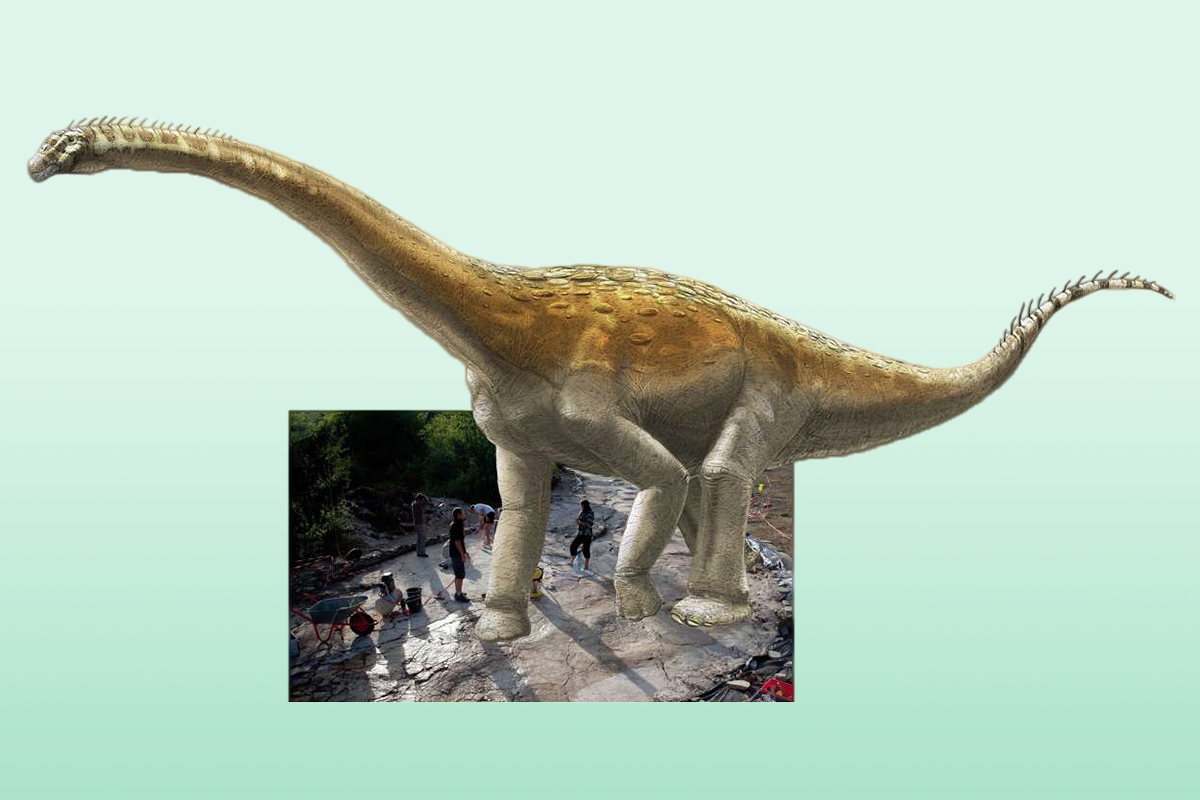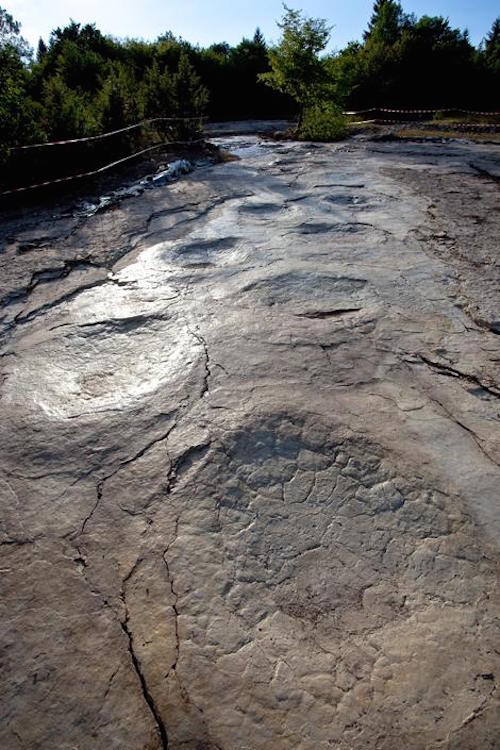110 Giant Steps: Long-Necked Dinosaur Breaks Record for Longest Trackway

Imagine a dinosaur footprint as long as a young child is tall. Now, imagine 110 of them. Amazingly, that's what paleontologists have discovered in eastern France — 110 fossilized footprints belonging to a long-necked sauropod that lived during the Jurassic period.
At more than 500 feet (155 meters) long, the footprint-speckled path is the longest sauropod trackway on record, according to the researchers. This lengthy trackway is a few yards longer than the previous record holders: a 465-foot-long (142 m) and a 482-foot-long (147 m) sauropod trackway in Galinha, Portugal, dating to the middle Jurassic, the researchers said.
Part of the trackway was uncovered in the French village of Plagne, located in the Jura Mountains, in 2009. In the years that followed, paleontologists uncovered more of the 150-million-year-old site, a meadowland covering 7.4 acres (3 hectares), an area roughly the size of six football fields. [Photos: Dinosaur Tracks Reveal Australia's 'Jurassic Park']
The sauropod's circular feet were big: 37 inches by 40 inches (94 by 103 centimeters), but the total footprint length could reach up to 10 feet (3 m) when considering the mud ring that was displaced by each step, the researchers said.

Based on its foot and handprint sizes, the herbivorous sauropod was likely 115 feet (35 m) long and weighed up to 40 tons, the researchers said. This would explain its average stride length of about 9 feet (2.8 m), they noted.
The fossilized prints yielded other clues, too. A close examination of the footprint revealed five oval-shaped toe marks, and the handprints had five spherical finger marks arranged in an arc, the researchers said. The dinosaur likely walked at a speed of 2.5 mph (4 km/h), they added.
Based on the prints' characteristics, the researchers gave the Plagne sauropod tracks a new scientific name: Brontopodus plagnensis. This is not the name of the dinosaur species (which remains unknown), but rather the name of the trace fossil — a fossil made by an animal, but not containing the animal itself, such as fossilized prints, burrows or feces.
Sign up for the Live Science daily newsletter now
Get the world’s most fascinating discoveries delivered straight to your inbox.
In addition to the sauropod tracks, the researchers also uncovered 18 fossilized prints that spanned 125 feet (38 m). These tracks appear to belong to a carnivorous dinosaur, which has left trace fossils, known as Megalosauripus, elsewhere.
The paleontologists have covered all these dinosaur tracks to protect them, and speculate that there are more left to be uncovered.
"Thousands of dinosaur tracks and trackways have already been recorded in the late Jurassic in the Jura Mountains," the researchers wrote in the study. "Undoubtedly, new discoveries and numerous excavations will take place in the future, making the Jura Mountains the most important European set of dinosaur track sites."
The study was published in the August 2017 issue of the journal Geobios.
Original article on Live Science.

Laura is the archaeology and Life's Little Mysteries editor at Live Science. She also reports on general science, including paleontology. Her work has appeared in The New York Times, Scholastic, Popular Science and Spectrum, a site on autism research. She has won multiple awards from the Society of Professional Journalists and the Washington Newspaper Publishers Association for her reporting at a weekly newspaper near Seattle. Laura holds a bachelor's degree in English literature and psychology from Washington University in St. Louis and a master's degree in science writing from NYU.









